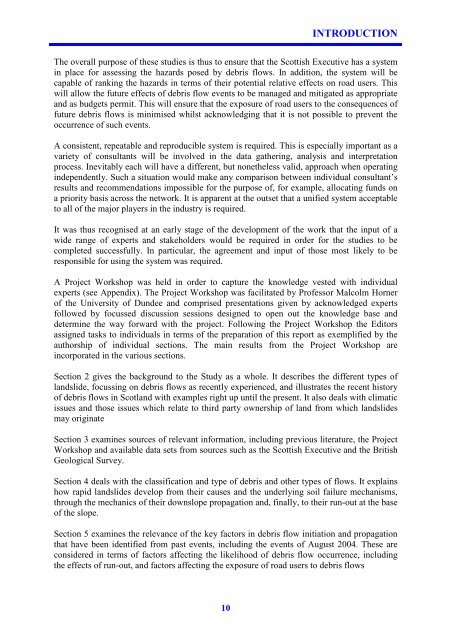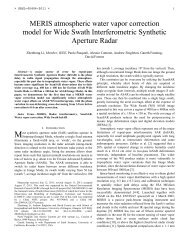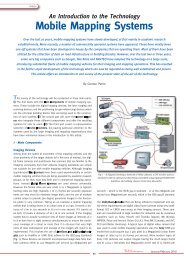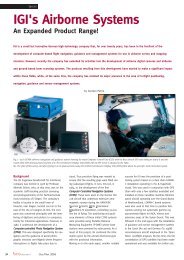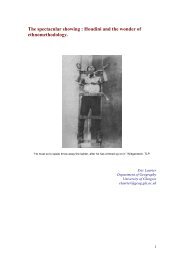Scottish Road Network Landslides Study - University of Glasgow
Scottish Road Network Landslides Study - University of Glasgow
Scottish Road Network Landslides Study - University of Glasgow
You also want an ePaper? Increase the reach of your titles
YUMPU automatically turns print PDFs into web optimized ePapers that Google loves.
10<br />
INTRODUCTION<br />
The overall purpose <strong>of</strong> these studies is thus to ensure that the <strong>Scottish</strong> Executive has a system<br />
in place for assessing the hazards posed by debris flows. In addition, the system will be<br />
capable <strong>of</strong> ranking the hazards in terms <strong>of</strong> their potential relative effects on road users. This<br />
will allow the future effects <strong>of</strong> debris flow events to be managed and mitigated as appropriate<br />
and as budgets permit. This will ensure that the exposure <strong>of</strong> road users to the consequences <strong>of</strong><br />
future debris flows is minimised whilst acknowledging that it is not possible to prevent the<br />
occurrence <strong>of</strong> such events.<br />
A consistent, repeatable and reproducible system is required. This is especially important as a<br />
variety <strong>of</strong> consultants will be involved in the data gathering, analysis and interpretation<br />
process. Inevitably each will have a different, but nonetheless valid, approach when operating<br />
independently. Such a situation would make any comparison between individual consultant’s<br />
results and recommendations impossible for the purpose <strong>of</strong>, for example, allocating funds on<br />
a priority basis across the network. It is apparent at the outset that a unified system acceptable<br />
to all <strong>of</strong> the major players in the industry is required.<br />
It was thus recognised at an early stage <strong>of</strong> the development <strong>of</strong> the work that the input <strong>of</strong> a<br />
wide range <strong>of</strong> experts and stakeholders would be required in order for the studies to be<br />
completed successfully. In particular, the agreement and input <strong>of</strong> those most likely to be<br />
responsible for using the system was required.<br />
A Project Workshop was held in order to capture the knowledge vested with individual<br />
experts (see Appendix). The Project Workshop was facilitated by Pr<strong>of</strong>essor Malcolm Horner<br />
<strong>of</strong> the <strong>University</strong> <strong>of</strong> Dundee and comprised presentations given by acknowledged experts<br />
followed by focussed discussion sessions designed to open out the knowledge base and<br />
determine the way forward with the project. Following the Project Workshop the Editors<br />
assigned tasks to individuals in terms <strong>of</strong> the preparation <strong>of</strong> this report as exemplified by the<br />
authorship <strong>of</strong> individual sections. The main results from the Project Workshop are<br />
incorporated in the various sections.<br />
Section 2 gives the background to the <strong>Study</strong> as a whole. It describes the different types <strong>of</strong><br />
landslide, focussing on debris flows as recently experienced, and illustrates the recent history<br />
<strong>of</strong> debris flows in Scotland with examples right up until the present. It also deals with climatic<br />
issues and those issues which relate to third party ownership <strong>of</strong> land from which landslides<br />
may originate<br />
Section 3 examines sources <strong>of</strong> relevant information, including previous literature, the Project<br />
Workshop and available data sets from sources such as the <strong>Scottish</strong> Executive and the British<br />
Geological Survey.<br />
Section 4 deals with the classification and type <strong>of</strong> debris and other types <strong>of</strong> flows. It explains<br />
how rapid landslides develop from their causes and the underlying soil failure mechanisms,<br />
through the mechanics <strong>of</strong> their downslope propagation and, finally, to their run-out at the base<br />
<strong>of</strong> the slope.<br />
Section 5 examines the relevance <strong>of</strong> the key factors in debris flow initiation and propagation<br />
that have been identified from past events, including the events <strong>of</strong> August 2004. These are<br />
considered in terms <strong>of</strong> factors affecting the likelihood <strong>of</strong> debris flow occurrence, including<br />
the effects <strong>of</strong> run-out, and factors affecting the exposure <strong>of</strong> road users to debris flows


